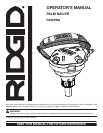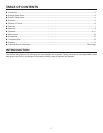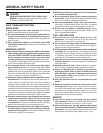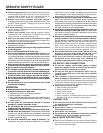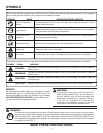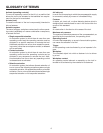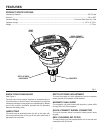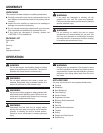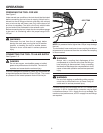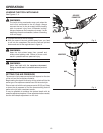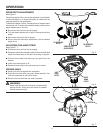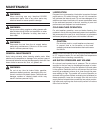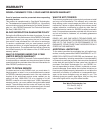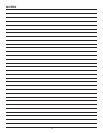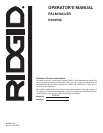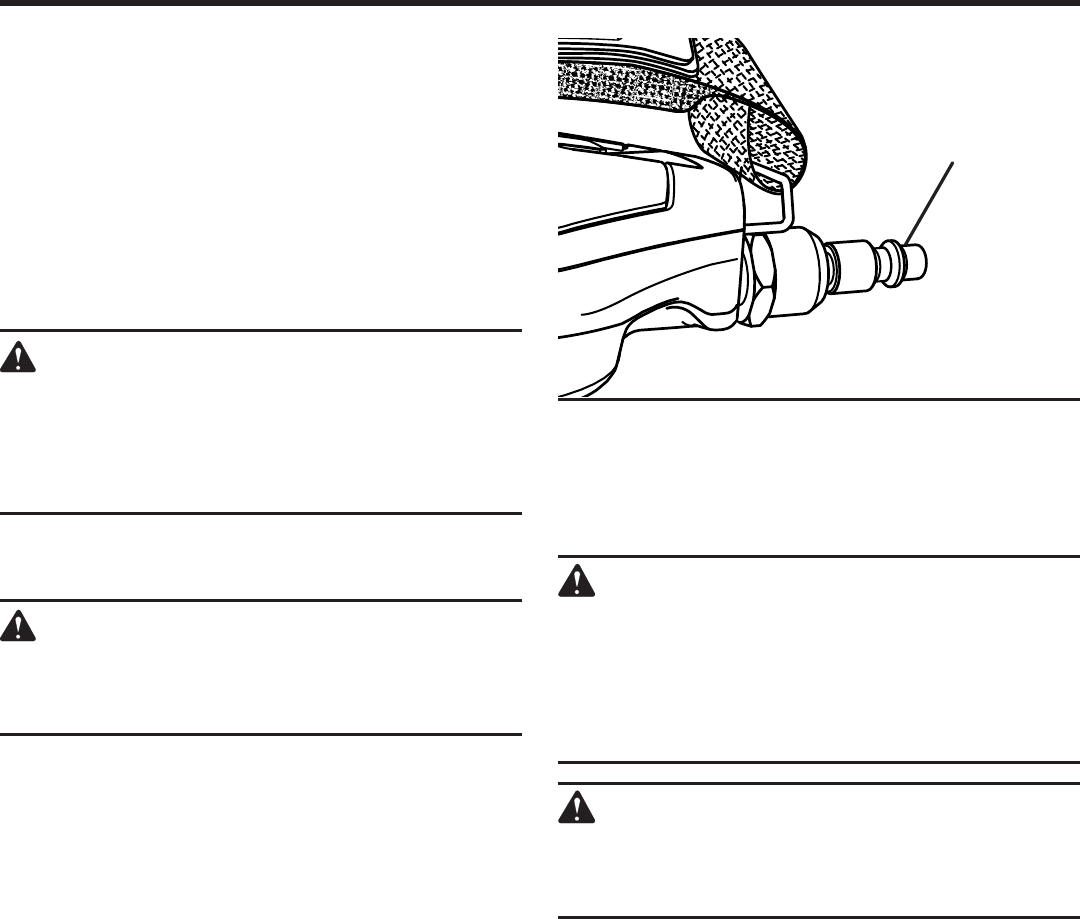
9
OPERATION
Fig. 2
PREPARING THE TOOL FOR USE
See Figure 2.
Under normal use conditions, the tool should be lubricated
before connecting the tool to an air supply. Add air tool lu-
bricant into the air fitting on the tool once daily with minimal
use, or twice a day with heavy use. Only a few drops of oil
at a time is necessary. Too much oil will only collect inside
the tool and will be noticeable in the exhaust cycle.
Before connecting the tool, check the air compressor gauge
to be sure it is functioning within the proper range of 50-
120 psi.
AIR FITTING
WARNING:
Disconnect the tool from the air supply before
leaving the work area, moving the tool to another
location, or handing the tool to another person.
Failure to do so could result in serious personal
injury.
CONNECTING THE TOOL TO AN AIR SUPPLY
See Figures 2 - 3.
DANGER:
Do not use oxygen, combustible gases or bottled
gases as a power source for this tool. The tool will
explode and cause death or serious injury.
This tool is designed to operate on clean, dry compressed air
at regulated pressures between 50 and 120 psi . The correct
air pressure is the lowest pressure that will do the job.
NOTE: Air pressure that is higher than 120 psi may damage
the tool.
The tool and air hose must have a hose coupling that allows
all pressure to be removed from the tool when the coupling
is disconnected.
WARNING:
Always use a coupling that discharges all the
compressed air in the tool at the time the fitting or
hose coupling is disconnected. Using a coupling
that does not discharge the compressed air could
cause unintended operation and serious personal
injury.
WARNING:
Do not climb rigging or scaffolding while carrying
a tool that is connected to an air hose. Doing so
could result in serious personal injury.
Connect the tool to the air supply with a 1/4 in. female quick
connector. A 3/8 in. female quick connector may be used
in situations where a 1/4 in. supply line is not available. For
maximum tool performance, a 3/8 in. supply line and fittings
are required.



